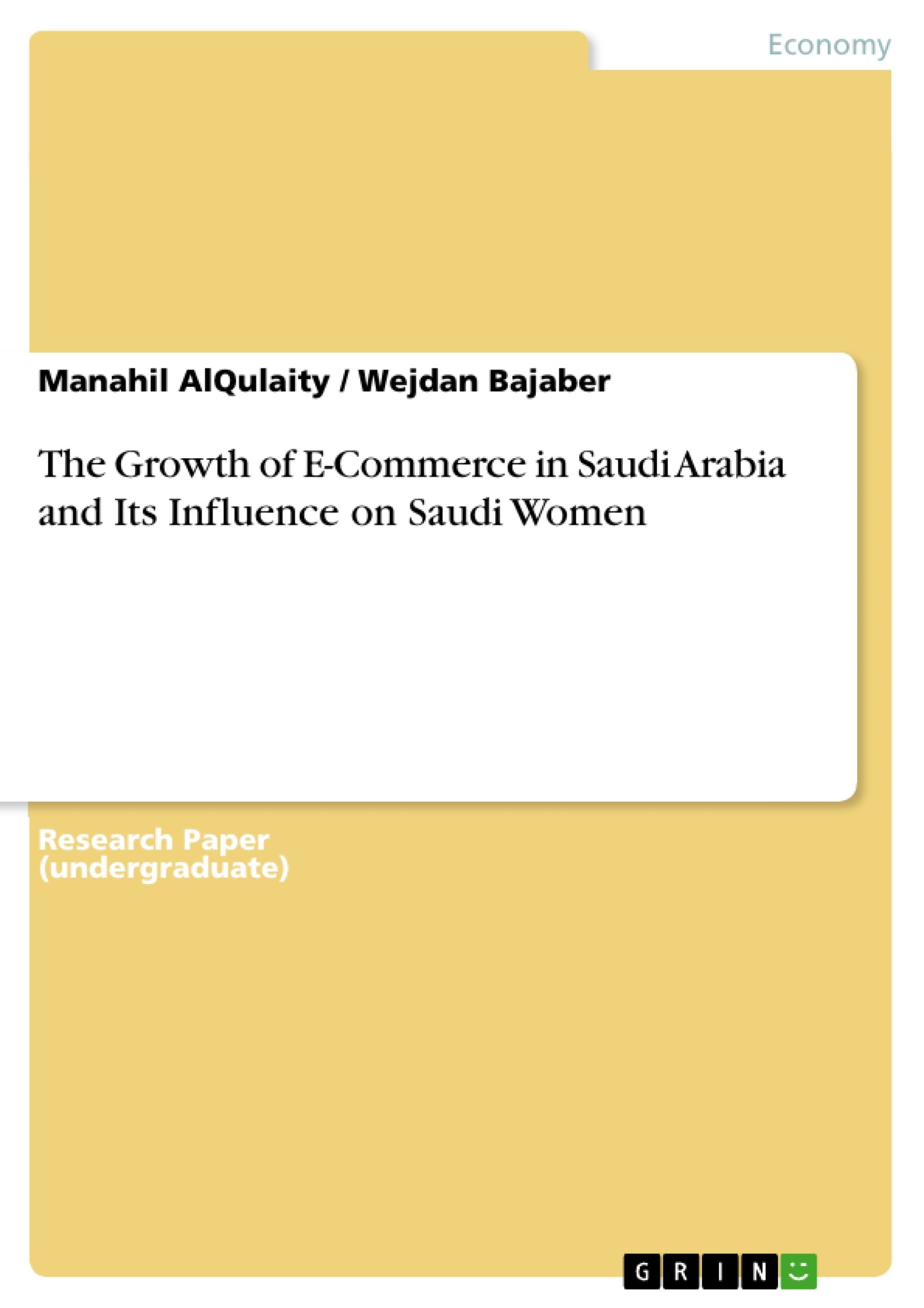This paper discusses the influence of e-commerce on Saudi females and investigates the factors affecting the adoption of e-commerce in the Kingdom of Saudi Arabia (KSA).
Recently, e-commerce started to get more attention in KSA, particularly among Saudi females. Cultural conditions along with the major role played by the social media have influenced Saudi females to enter the market.
Although Saudi Arabia is considered one of the biggest personal computers markets in the Arab world, e-commerce is growing slowly. The main reason behind the slow adoption pattern is believed to be related to the complexity of providing a proper infrastructure and establishing trust between businesses and the customers. In addition to users readiness, privacy issues, cultural issues, payment issues, and the standard rules that states and guarantees the rights of both parties involved in the online trade.
Table of Contents
- Introduction
- Background
- E-commerce in the Middle East
- The Research Questions
- Literature Review
- Table of Attributes
- The main factors affecting the growth of e-commerce in KSA
- Delivery System
- Saudi Post Services
- Alternative Delivery Services
- Government Regulation
- Trust
- Cultural Issues
- Result Summary
- Conclusion
- References
- Appendix
Objectives and Key Themes
The paper investigates the influence of e-commerce on Saudi women and examines the factors affecting the adoption of e-commerce in Saudi Arabia (KSA). It aims to answer two research questions: what factors influence the adoption of e-commerce in KSA, and what factors specifically affect the adoption of e-commerce by Saudi women?
- The impact of e-commerce on Saudi women
- Factors affecting e-commerce adoption in Saudi Arabia
- The role of government regulation and trust in e-commerce growth
- The influence of cultural issues and social media on Saudi women's e-commerce participation
- The importance of delivery systems, payment methods, and user readiness in e-commerce adoption
Chapter Summaries
- Introduction: Introduces the concept of e-commerce and its significance in KSA, highlighting the increasing role of e-commerce among Saudi women. The paper outlines the factors behind the slow adoption of e-commerce in KSA and emphasizes the need for further research on this topic.
- Background: Provides a historical overview of the development of e-commerce, emphasizing the evolution of key aspects such as online shopping systems, payment methods, and mobile commerce. The chapter highlights the growing influence of e-commerce on various sectors, particularly in the Middle East.
- E-commerce in the Middle East: Presents data and insights from a PayPal report on e-commerce trends in Saudi Arabia, Qatar, and the United Arab Emirates. The chapter focuses on aspects such as online shopping habits, payment methods, and the growth of mobile commerce in these countries.
- The Research Questions: Outlines the paper's two main research questions: identifying factors affecting the adoption of e-commerce in KSA and exploring factors influencing the adoption of e-commerce by Saudi women.
- Literature Review: Analyzes existing research on e-commerce in Saudi Arabia. The chapter examines previous studies that explored e-commerce adoption factors, customer readiness, cultural issues, and the challenges associated with e-commerce implementation in KSA. It highlights key findings and insights from various research papers.
- Table of Attributes: Presents a table summarizing the key focus areas of several studies on e-commerce adoption in KSA. This table highlights the common themes and perspectives explored in previous research.
- The main factors affecting the growth of e-commerce in KSA: This section examines the main factors that have influenced e-commerce development in KSA, focusing on delivery systems, government regulations, trust, and cultural issues.
- Delivery System: Discusses the importance of delivery systems in e-commerce and examines the current delivery system in KSA, highlighting the evolution of postal services and the role of alternative delivery services. The chapter explores improvements in infrastructure and addresses concerns regarding delivery systems as a major barrier to e-commerce growth.
- Government Regulation: Explores the significance of government regulation in fostering e-commerce adoption. The chapter highlights the lack of comprehensive e-commerce regulations in KSA and examines existing regulations on cybercrime, spam, and online content. It emphasizes the need for further government involvement in promoting e-commerce growth and protecting consumers.
- Trust: Discusses the importance of consumer trust in online transactions. The chapter examines the factors that influence consumer trust in e-commerce, including risk perception, reputation, and security. It highlights the role of user interface quality, information quality, privacy, and security in building trust and promoting e-commerce adoption in KSA.
- Cultural Issues: Explores the influence of cultural factors on Saudi women's adoption of e-commerce. The chapter presents the results of a survey conducted among Saudi female online traders, highlighting their motivations, challenges, and experiences in e-commerce. It emphasizes the role of cultural and social factors in shaping women's participation in the e-commerce market.
- Result Summary: Summarizes the findings of the survey on Saudi female online traders, emphasizing the key reasons behind their e-commerce participation, including unemployment, family commitments, and the need for additional income.
Keywords
E-commerce, Saudi Arabia, Saudi women, e-commerce adoption, government regulation, trust, cultural issues, delivery systems, online shopping, social media, mobile commerce, user readiness, payment methods, unemployment, family commitments, online trading, market growth, consumer behavior.
- Quote paper
- Manahil AlQulaity (Author), Wejdan Bajaber (Author), 2015, The Growth of E-Commerce in Saudi Arabia and Its Influence on Saudi Women, Munich, GRIN Verlag, https://www.grin.com/document/312495



